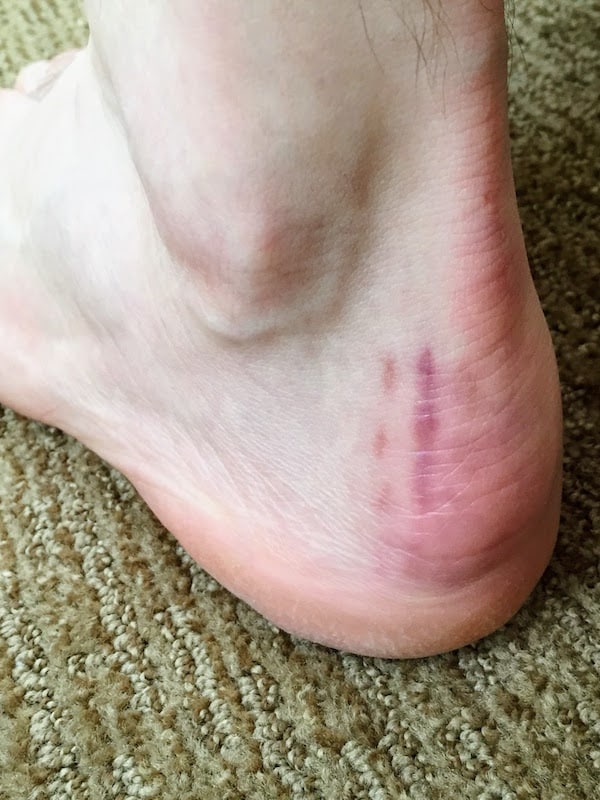The Brachymetatarsia surgery cost with insurance, ranges from $5,000 to $20,000 or more. Can vary based on multiple factors. These factors include the complexity of the procedure, surgeon’s fees, anesthesia fees, facility fees, and geographical location. Generally, the estimated cost However, it’s important to note that these figures are approximate and can differ based on individual circumstances and insurance coverage. To obtain an accurate cost estimation, it is recommended to consult with your healthcare provider and insurance company directly.
Factors to Consider for Brachymetatarsia Surgery Cost
When considering the cost of brachymetatarsia surgery, it is important to take into account several factors that can influence the overall expenses. These factors include:
- Procedure Complexity: The complexity of the brachymetatarsia surgery can impact the cost. The severity of the condition, the number of toes affected, and the specific surgical techniques required can all affect the complexity of the procedure and, consequently, the cost.
- Surgeon’s Expertise and Reputation: The experience, qualifications, and reputation of the surgeon can influence the cost. Highly skilled and renowned surgeons may charge higher fees due to their expertise in performing brachymetatarsia surgeries.
- Geographical Location: The cost of brachymetatarsia surgery can vary depending on the geographical location. Factors such as the local cost of living, healthcare market dynamics, and regional price variations can influence the overall cost.
- Insurance Coverage: The extent of insurance coverage for brachymetatarsia surgery will impact the out-of-pocket expenses. Different insurance plans have varying coverage policies, deductibles, copayments, and reimbursement rates. It is essential to review your insurance policy and consult with your insurance provider to understand the coverage details and associated costs.
- Pre-operative Evaluations and Tests: Pre-operative evaluations, including diagnostic tests and consultations, are typically required before brachymetatarsia surgery. These evaluations can add to the overall cost of the procedure.
- Anesthesia and Facility Fees: Anesthesia fees and facility fees are additional costs associated with brachymetatarsia surgery. These fees cover the use of the operating room, anesthesia administration, and post-operative care.
- Post-operative Care and Follow-up: Post-operative care, including follow-up appointments and potential physical therapy sessions, should be considered when estimating the total cost of brachymetatarsia surgery.
It is important to discuss these factors with your healthcare provider and consult with your insurance company to get a comprehensive understanding of the potential costs involved. They can provide you with a more accurate cost estimate based on your specific needs and circumstances.

Insurance Policies and Requirements: Knowing What to Expect When Seeking Coverage
When seeking insurance coverage for brachymetatarsia surgery, it is important to be familiar with your insurance policies and understand the requirements for coverage. Here are some key points to consider:
- Review Your Policy: Start by reviewing your insurance policy documents thoroughly. Pay attention to the sections that outline coverage for elective surgeries, cosmetic procedures, and foot-related conditions.
- Medical Necessity: Insurance coverage for brachymetatarsia surgery may depend on whether it is considered medically necessary or purely cosmetic.
- Pre-authorization Requirements: Check if your insurance requires pre-authorization for brachymetatarsia surgery. Pre-authorization involves submitting documentation, such as medical records, diagnostic test results, and a surgeon’s recommendation, to determine if the procedure meets the insurance company’s criteria for coverage.
- In-network Providers: Find out if your insurance plan has a network of preferred providers. In-network providers have negotiated rates with the insurance company, which can result in lower out-of-pocket costs for you.
- Coverage Limitations: Determine if there are any limitations on coverage, such as maximum benefit amounts or annual limits.
- Deductibles and Copayments: Understand your deductible and copayment requirements. Deductibles are the amount you need to pay out of pocket before insurance coverage kicks in, while copayments are fixed amounts you must pay for each medical service or visit.
- Documentation and Medical Necessity Letters: Your surgeon may need to provide documentation and a medical necessity letter to support your case for insurance coverage.
- Appealing Denials: In the event of a denial or limited coverage, you have the right to appeal the decision.
Remember to consult with your insurance provider directly to obtain accurate and up-to-date information about their specific policies, requirements, and coverage for brachymetatarsia surgery. Understanding your insurance coverage can help you navigate the financial aspects of the procedure and make informed decisions regarding your healthcare.
Out-of-Pocket Expenses: Understanding Potential Costs Not Covered by Insurance
When undergoing brachymetatarsia surgery, it’s important to be aware of potential costs not covered by insurance. These expenses may include deductibles, copayments, surgeon’s fees, anesthesia and facility fees, prescription medications, post-surgery care, and travel and accommodation expenses. Understanding these out-of-pocket costs can help you plan and budget accordingly for your brachymetatarsia surgery.
It’s advisable to contact your insurance provider to discuss your coverage in detail and gain clarity on what expenses you’ll be responsible for. Being prepared will ensure you can make informed decisions and avoid any financial surprises during your brachymetatarsia surgery journey.
Financing Options: Exploring Financial Assistance for Brachymetatarsia Surgery
If you’re concerned about the cost of brachymetatarsia surgery and potential out-of-pocket expenses, there are various financing options and financial assistance programs available to help make the procedure more affordable. Here are some options to consider:
- Healthcare Financing: Many healthcare financing companies offer loans specifically for medical procedures. These loans often have low or no interest rates and flexible repayment terms. Research different healthcare financing providers to find one that suits your needs.
- Payment Plans: Some healthcare providers and surgical facilities offer payment plans that allow you to spread out the cost of your brachymetatarsia surgery over time. These plans may involve monthly installments, making the financial burden more manageable.
- Medical Credit Cards: Certain credit cards are designed for medical expenses and may offer promotional interest rates or flexible payment options. Before choosing this option, carefully review the terms and conditions to ensure it aligns with your financial goals.
- Health Savings Accounts (HSAs) or Flexible Spending Accounts (FSAs): If you have an HSA or FSA, you can use the funds to cover eligible medical expenses, including brachymetatarsia surgery. Check with your employer or financial institution for details on how to access these funds.
- Charitable Organizations and Grants: Some charitable organizations and foundations provide financial assistance to individuals in need of medical treatments. Research and reach out to relevant organizations that may offer grants or scholarships specifically for brachymetatarsia surgery.
- Negotiating with Healthcare Providers: Don’t hesitate to discuss your financial situation with your healthcare provider. They may be willing to work with you on payment arrangements or offer discounted rates, especially if you can demonstrate financial need.
- Insurance Reimbursement: While brachymetatarsia surgery may not be fully covered by insurance, some portions of the procedure may be eligible for reimbursement. Keep track of all medical expenses related to your surgery and consult with your insurance provider to explore potential reimbursement options.
It’s essential to research and consider all available financing options and financial assistance programs to determine the best approach for your specific situation.

Discussing with Your Surgeon: Planning Ahead for Cost Considerations and Payment Options
When discussing brachymetatarsia surgery with your surgeon, it’s crucial to address the cost considerations and payment options. Here’s a summary of key points to cover:
- Procedure Cost: Talk about the total cost, including surgeon’s fees, anesthesia fees, facility fees, and additional expenses.
- Insurance Coverage: Inquire about your insurance coverage and understand any out-of-pocket expenses.
- Payment Options: Explore available payment plans or financing options offered by your surgeon.
- In-Network Providers: Check if your surgeon is in-network with your insurance to potentially reduce costs.
- Health Savings Accounts (HSAs) or Flexible Spending Accounts (FSAs): Discuss the possibility of using funds from these accounts to cover expenses.
- Financial Assistance Programs: Ask about any available programs or grants to assist with the surgery costs.
- Payment Deadlines: Understand the payment deadlines and any required upfront deposit.
By discussing these aspects, you can plan for the financial considerations and determine the best payment approach for your situation.
Understanding Brachymetatarsia Surgery
Brachymetatarsia surgery is a procedure that corrects abnormally short metatarsal bones in the foot. It offers several benefits, including improved foot function, enhanced aesthetic appearance, expanded shoe options, reduced pain and discomfort, and an improved quality of life. Consulting with a qualified surgeon is crucial to determine if the surgery is appropriate for your condition.
References:
- Bunion Surgery Miami. (n.d.). Toe Lengthening for Brachymetatarsia. Retrieved from https://bunionsurgerymiami.com/toe-lengthening-brachymetatarsia/




